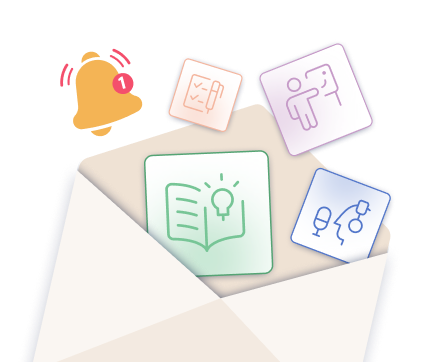What Are Learning Analytics?
Learning analytics involve the collection, analysis, and reporting of data about learners and their learning process. These analytics serve multiple purposes, including understanding how health professionals are engaging with their training modules and improving educational outcomes.
What Are Key Metrics?
Key metrics are quantifiable measures used to track performance. In the context of learning analytics, these metrics provide insights into how effective your learning strategies are, how staff are progressing through mandatory and compliance training, and whether your objectives are being met.
What Are the Key Metrics for Learning Analytics?

While you may be familiar with common metrics such as compliance rates, there are additional metrics to consider within learning analytics that can help you enhance your staffs learning and development.
- Completion Rates: Measures how many learners complete their training modules.
- Conversion Rates: Measures how many learners transition from one phase of training to another.
- Staff Retention: Evaluates whether the training is effective enough to retain staff in the long term.
- Time Spent: Records the time learners take to complete modules.
- Learning Pathway: Tracks the routes taken by learners through a course.
- Quiz Scores: Assesses the learners' understanding of the training material.
Why Are These Learning Analytics Key Metrics Important for Healthcare?
In the healthcare industry, the stakes are exceptionally high. Errors or lapses in understanding can lead to poor patient outcomes or, in extreme cases, loss of life. For this reason, learning analytics take on a heightened level of importance. Health professionals must keep up-to-date with constantly evolving medical procedures, medications, public health policies, and healthcare systems.
- Mandatory training Given the urgency and importance of such training, it’s crucial to know not just whether staff are completing these modules, but how well they are learning and retaining the information. Key metrics allow for an understanding of both these aspects.
- Staff Retention: Skilled healthcare professionals are in high demand, and the investment in their training is substantial. Effective, tailored training programs are more likely to retain staff, thus providing better long-term care and reducing the costs associated with high staff turnover.
- Regulatory bodies: Proper training backed by robust analytics can provide the necessary documentation and proof of competence when facing such scrutiny.
- Adapting to change: the healthcare system is continually adapting to new challenges. Learning analytics provide the insights needed to continually refine and improve training programs, making them as efficient and effective as possible.
How Do I Measure These Key Metrics for Learning Analytics?
Measuring key metrics in learning analytics involves a structured approach that includes both qualitative and quantitative methods.
| Measuring Method | Explanation |
|---|---|
| Pre and post-assessment quizzes | Gauge knowledge gains. For example, you could administer a quiz before the commencement of a mandatory training module and another at the end to measure how much the health professionals have learned. |
| Learner satisfaction | Questions can range from the perceived usefulness of the course to the clarity of the material. This feedback is particularly crucial in healthcare, where the training often directly affects patient outcomes. |
| Analytics dashboards | These dashboards can show data on individual engagement, time spent on the course, and how often resources are accessed. The real-time nature of this data allows for immediate intervention if any issues arise, a crucial factor when training staff on new health conditions or changes in public health policies. |
Want a healthcare LMS that can track key learning analytics metrics?
Contact Ausmed today and see how we can support your organisation!
What Tools Can I Use to Measure These Key Metrics for Learning Analytics?
Choosing the right tools for measuring key metrics is vital, especially in a highly regulated industry like healthcare. When selecting tools, it's crucial to ensure they comply with Australian healthcare standards such as those set by the Aged Care Quality and Safety Commission and the Australian Commission on Safety and Quality in Health Care. This ensures that your analytics are both accurate and ethical.
Learning Management Systems (LMS)
Learning Management Systems (LMS) often come with built-in analytics tools that can track a wide range of metrics from completion rates to quiz scores. Some advanced LMS even offer predictive analytics, which can be useful for identifying trends and making proactive improvements to your learning strategies.
Third Party Analytics Tools
Third-party analytics tools can also be integrated into your existing LMS. These often offer more specialised analytics capabilities, such as heat mapping, which can show you where learners most frequently drop out or struggle. Given that healthcare staff often have limited time, understanding these pain points can be crucial for course design.
How Do I Begin Tracking These Key Learning Metrics?

Starting to track these key metrics may seem overwhelming, doesn't need to be. Let's break it down.
- Define the goals and objectives for your training programs: What do you hope to achieve with your compliance and mandatory training modules? Is it better preparedness among health professionals for new health system protocols, or is it increased staff retention? Once you have specific goals in mind, it becomes much easier to align them with appropriate key metrics.
- Set up the chosen analytics tools Ensure that these tools can measure the metrics you've identified and can do so in a way that suits your reporting needs. For example, if your goal is to improve the staff learning process, tools that can measure engagement levels would be beneficial.
- Trial the analytics tool (if necessary): Ensure that it's capturing the right data and that it integrates well with your existing educational modules. This testing phase will give you a preliminary understanding of the system’s capabilities and any adjustments that may be needed.
Once you've performed these steps, you'll be ready to begin analysing and leveraging the data being captured in accordance to the key metrics you've defined.


Related Resources
- Guide to Mandatory Training
- LMS in Healthcare: The Roles, Benefits and Pros and Cons
- What Are Learning Analytics?
- A Step-by-Step Guide to Data Collection for Learning Analytics
- How to Create a Culture of Continuous Learning
- What Are the Best Practices for Learning Accessibility?
- Guide to Compliance Training (for Healthcare Managers)
- How to Manage an Effective Staff Training Program
Conclusion
Monitoring key metrics in learning analytics is crucial for the ongoing success of educational programmes, especially in the healthcare sector. By paying attention to these metrics, education and learning & development managers can make informed decisions that benefit both the staff and the patients they serve.



